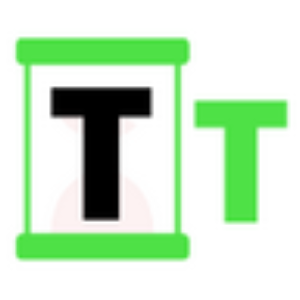XAUT & PAXG: ‘Digital Gold’ Use Is Soaring
6 min read
Summary Tokenized Gold like PAXG and XAUT offers liquidity and divisibility advantages over physical bullion and ETFs, making them attractive for retail investors. PAXG is preferred due to higher usage, more retail holders, and trust in Paxos, a regulated US-based company. Both tokens represent physical Gold 1:1, but PAXG dominates market activity with 85% of daily transferred value and 88% of tokenholders. Despite benefits, Ethereum’s variable fees pose a risk; PHYS in a tax-advantaged account remains a strong alternative for Gold exposure. With respect to Bitcoin ( BTC-USD ), the real ‘Digital Gold’ may just be regular old Gold ( XAUUSD:CUR ) after all. Through the ‘tokenization’ of apparently real physical Gold backing, Tether Gold ( XAUT-USD ) and PAX Gold ( PAXG-USD ) have seen explosive usage on Ethereum ( ETH-USD ) in 2025. In this article, we’ll dive into what tokenization is, what XAUT and PAXG claim to provide the market, the growing usage for each asset, and whether or not assets like XAUT and PAXG should be considered in a digital asset portfolio. Tokenization Asset tokenization is actually pretty straightforward. Utilizing smart contracts on public blockchain infrastructure, real world assets (or RWA) like treasuries or commodities can have digital representation minted on the blockchain. Stablecoins can very much be considered to be tokenized dollars. For instance, when Circle issues new USD Coin ( USDC-USD ), the company is taking a dollar-deposit from a market participant and minting a digital representation of that dollar on the blockchain so it can be used for a variety of different functions. Those functions can include cross-border payments in fiat, lending strategies in DeFi, or even trading for a different RWA. The stablecoin market has exploded to well over $200 billion in supply, but dollar derivatives aren’t the only assets that have seen strong growth in tokenization: Non-Stablecoin RWA Value (RWA.xyz) Presently, the market for tokenized non-stablecoin RWA on public blockchain rails is $21 billion and growing quickly – up 32% year to date. The largest non-stablecoin RWA category is private credit. US Treasury debt is the next biggest. Commodities, while comparatively small at just $1.4 billion in valuation, are up 40% year to date. This growth in commodity-backed RWA has been entirely driven by two assets; PAXG and XAUT. The combination of the two account for over 98% of the commodity-backed RWA market and are each digital representations of physical Gold bullion. XAUT vs PAXG From a token detail standpoint, XAUT and PAXG are very similar. Both coins represent an ounce of Gold on a 1:1 basis. From a market adoption standpoint, XAUT gets the slight edge in market capitalization with nearly $850 million in Gold-backed tokens: Token Details XAUT PAXG Token Issuer Tether Paxos Global Coin Supply 246.52k 230.31k Market Cap $848.8 million $793.1 million Market Cap Rank 72 77 Source: CoinMarketCap.com, as of 4/21/25 Given both assets are 1:1 and have similar market caps, the coin supply between the tokens is very close as is total market cap ranking with both making it into crypto’s top 100. There are two ways to buy XAUT and PAXG; directly from the issuer or in the secondary market through an exchange. If one purchases the assets through the issuer, they will have to comply with KYC protocols and investment minimums as well as paying token minting fees – 25 basis points for XAUT and a variable rate between 0.15% and 1% for PAXG depending on quantity of coins created. Physical redemption is also possible with each, though the minimums for redemption are very large. Both Tether and Paxos require 430 XAUT/PAXG tokens for physical redemption; which is nearly $1.5 million at today’s prices. Paxos doesn’t charge a custody fee and vaults the metal with the LBMA. Tether also stores without a custody fee and the metal is held in Switzerland. Digital Gold Holder & Usage Growth Though each Gold-backed RWA token has a similar supply and framework, the usage difference between the two is quite striking. PAXG is utilized to a far larger degree than XAUT: 30 Day Average Transferred Value (CoinMetrics) The chart above shows the 30 day average for daily transferred value denominated in dollars. Combined, the two tokens are currently moving about $25 million in value per day, with PAXG handling about 85% of that flow. While these value numbers aren’t all time high figures, they are the largest prints in over two years and show increasing demand for the tokens. While transferred value isn’t yet at all time highs, daily active addresses are already there: 30 Day average DAAs (CoinMetrics) Combined, XAUT and PAXG crossed 1,000 30-day average DAAs for the first time. Again, PAXG is the clear market favorite here with nearly 75% of DAA share. This is perhaps unsurprising given the enormous lead PAXG has in tokenholders: Tokenholders (CoinMetrics) At over 42k tokenholders, PAXG has 88% of the Gold RWA token market purely from a user standpoint. If Gold-backed tokens were to become a larger part of global commerce and/or settlement, PAXG seemingly has a large head start given the edge in users. Per data from IntoTheBlock, XAUT has an enormous concentration of assets with ‘whale’ wallets holding more than 91% of total supply. Retail holds just 4% of XAUT. PAXG Token Concentration (IntoTheBlock) PAXG is far more retail-driven with 38% of the token supply held by the retail cohort and just 37% held by ‘whales.’ Pros and Cons of ‘Digital Gold’ At the end of the day, Gold buyers interested in tokens like PAXG and XAUT would need a justifiable reason to consider buying the tokens over more traditional alternatives. Before Gold-backed RWA tokens came into the market, the only real options ‘retail’ investors/traders had for Gold exposure was either through direct purchase of the metal from a bullion dealer or through a derivative proxy/wrapper like an ETF in a standard brokerage account. Tokenized Gold is sort of a blend between the two. While only those with the ability to buy 430 ounces at a time could ever consider taking delivery, PAXG/XAUT do offer certain liquidity advantages over both physical bullion and ETF shares. PAXG vs Alternatives (Paxos) For instance, PAXG and XAUT are both highly divisible. Looking at etherscan, I was able to find a recent PAXG transaction that moved just $50 in PAXG – less than a gram of Gold – for just 18 cents in ETH. This is a ridiculously cheap way to move Gold. And even significantly larger transactions are cheap as well. Consider this transfer from Paxos to Binance: $2 million moved for 13 cents (Etherscan) 600 PAXG tokens, more than $2 million in Gold, transferred from Paxos to Binance for just 13 cents in ETH. Lets compare this to other methods for Gold exposure and build a table based on a purchase value of 5 Gold grams. For comparison purposes, I’m using the Sprott Physical Gold Bullion Trust ( PHYS ) as my ETF/CEF product because it’s the one that I actually use for my Gold investment. Gold Products Total Cost Tx Fee/Dealer Margin Storage Cost PAXG/XAUT $550.15 $0.15 None PHYS $539.84 None 0.41% SD Bullion $586.47 $36.47 None Source: Sprott, SD Bullion, Author’s calculations At today’s Gold price, a single gram costs $110. Thus, a 5-gram purchase of Gold requires $550 for the metal value. Buying and taking physical delivery through an online bullion store is understandably the most expensive method here because it’s the only one where physical metal is guaranteed to move. PHYS closed the prior session at a 1.8% discount to Net Asset Value. Thus, PHYS is far and away the cheapest way to gain Gold exposure of these three methods. However, PHYS is limited to market hours only. PAXG and XAUT can be freely traded on secondary markets 24 hours per day, 365 days per year. Closing Thoughts I’m highly intrigued by both PAXG and XAUT. Given a choice between the two, my own preference would be PAXG due to my trust preference in the issuer. Right or wrong, Tether has a reputation for lacking transparency and Paxos Global is a US-based company that is regulated by the NYDFS. I think there are fewer trust-assumptions baked into PAXG than there are with XAUT. I could certainly entertain trading PAXG due to the liquidity and 24/7 accessibility advantages. It’s very easy to get in and out of the asset on Ethereum – especially when mainnet fees are cheap. But that’s a major risk to consider for holding any asset on Ethereum whether it be of the RWA or completely intangible variety. Ethereum has a history of spiking fees when network usage picks up. Just because someone can economically buy 5 grams of Gold through PAXG today, it doesn’t mean they can necessarily sell it economically tomorrow. For ‘Digital Gold,’ I still think PHYS in a tax-advantaged account is the obvious choice.

Source: Seeking Alpha



